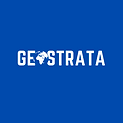Tracing Climate Change - From Myths to Modern Strategies
- THE GEOSTRATA
- Jan 30
- 2 min read
Updated: Mar 25
Earth’s environment and its climate have changed throughout history, with it experiencing eight cycles of ice ages and warm periods in the last 8,00,000 years. The effect of human intervention on the earth’s atmosphere cannot be ignored, this has produced swift changes in the ocean, land, cryosphere and biosphere “Rain follows the plow” a myth that was once highly entrenched into the roots of the agricultural society of the 19th century represents the inception of climate change as a concept.

Cover by The Geostrata
Disapproved by the Dust bowl incident, a period of severe dust storms in Canada and the United States, “Rain follows the plow” was one of the first theories which established human interdependence with nature (History.Com, 2017). The modern understanding of climate change is based on the efforts of Joseph Fourier, a French mathematician and physicist who hypothesised the idea of the greenhouse effect’. Backed by his intrigue, he took it upon himself to calculate the supposed temperature of the earth, according to which the earth should've been cooler than the average global temperature of 15°c (NASA, 2024).
Building on these results, in 1859, Irish physicist John Tyndall created an apparatus to perceive the process of greenhouse effect. This laid the foundation and set precedent for the contemporary explanation on climate change, weather and meteorology (Jackson, 2019).
The story of the 18th and 19th century is a smoke-filled one. A period of Industrial revolution took over the Western world starting with the United Kingdom. While industrialisation is attributed to the everlasting growth of the developed economies, its cost on the environment was neglected and trivialized.
Although a mechanism for boosting productivity, fossil fuels like coal led to high amounts of carbon emissions while inadvertently encouraging deforestation and exhaustion of natural resources (Anderson, 2024). This process led to large-scale migration from rural to urban areas, resulting in population explosion, creating an urgent need for increased agricultural productivity, thus sidelining the customary hazardous practices like stubble burning (T et al., 2020).
To download the report please click the button below -
For all official and academic purposes, use the following as a citation, which follows the Chicago Manual Style.
C. Shraddha
“Tracing Climate Change - From Myths to Modern Strategies”
THE GEOSTRATA, January 30, 2025.
BY C. SHRADDHA
TEAM GEOSTRATA
.png)
Comments